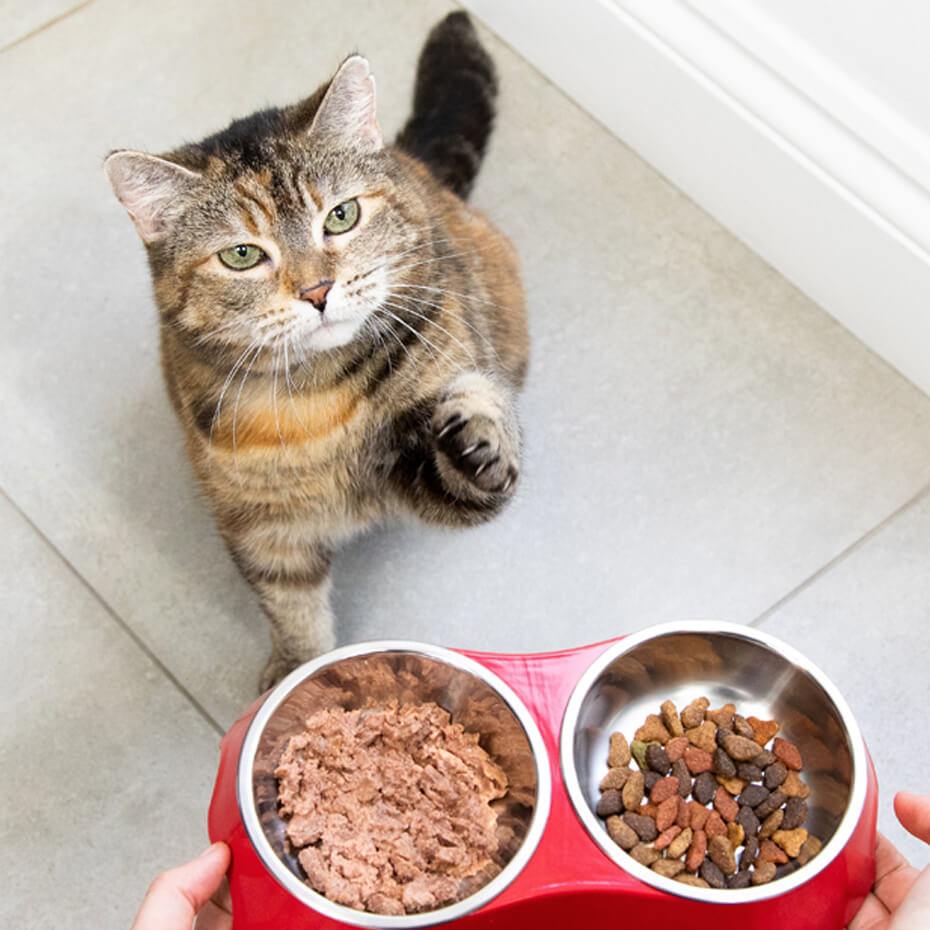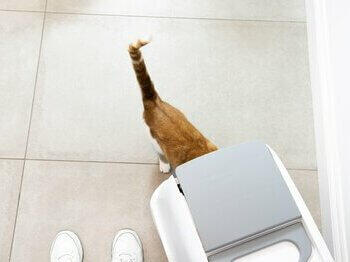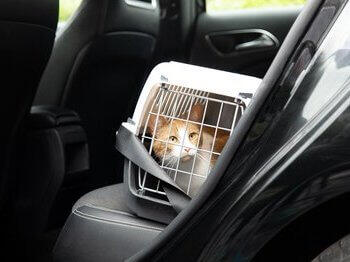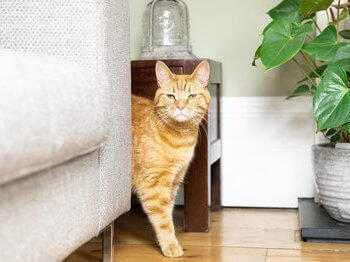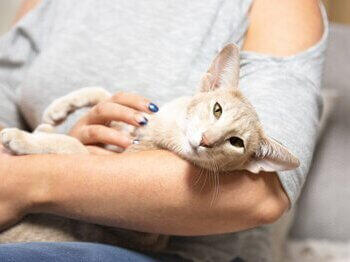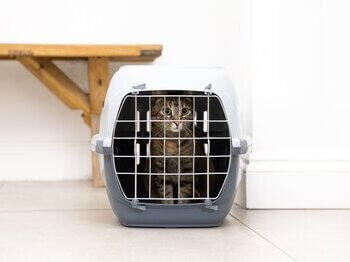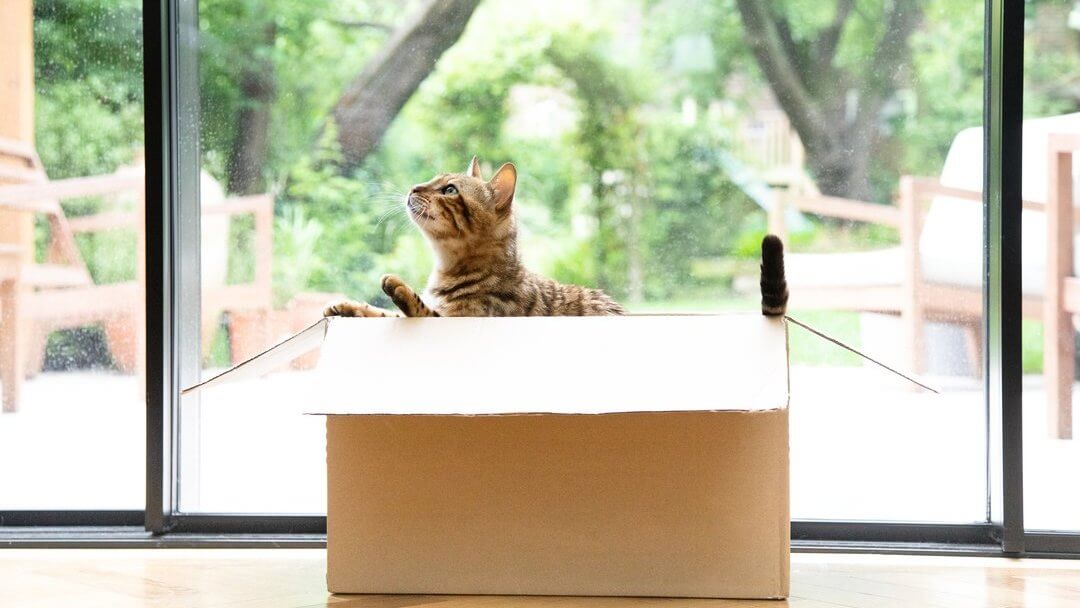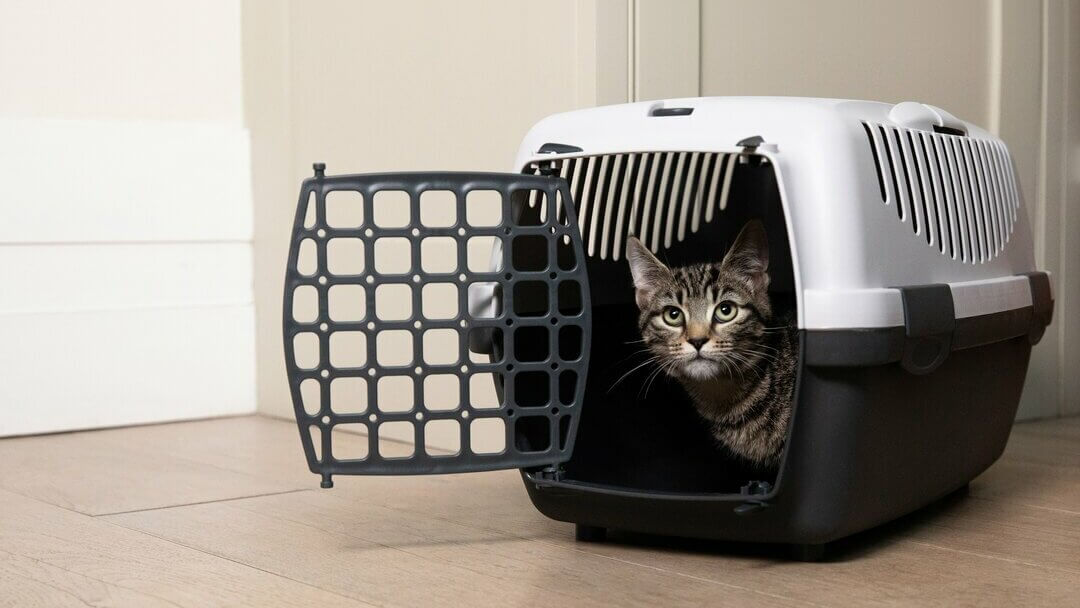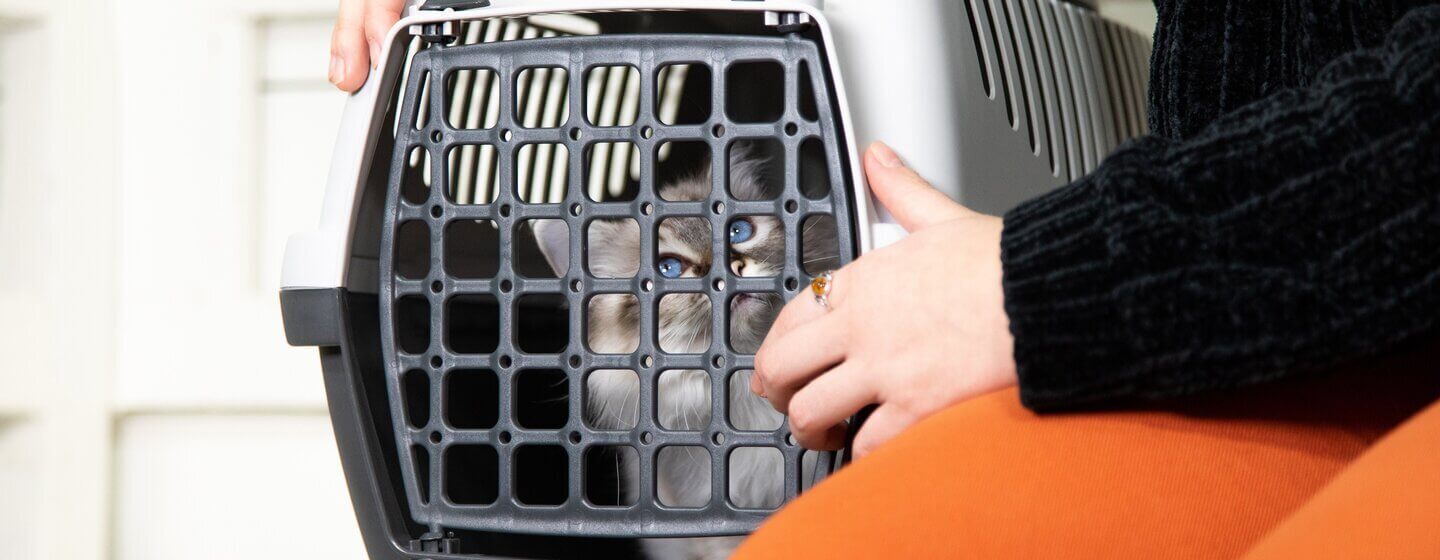
Most cats are home lovers, so travelling anywhere else with them can make them stressed. Some journeys are unavoidable, so when travelling with cats it’s important to know how you can make your feline friend feel comfortable.
Most cats are home lovers, so travelling anywhere else with them can make them stressed. When travelling with cats it’s important to know how you can make your feline friend feel comfortable. We’ve put together some cat travel tips to help everything run smoothly.
Cat car travel
Knowing how to travel with cats in the car is the most useful place to start. If you’re confident and in control, and you understand how to keep your cat calm, the journey can be relatively stress-free for both of you.
Your most important piece of luggage, apart from your cat of course, is a cat carrier or a cat transporter. Never let your cat travel loose in the car – they could distract the driver so it’s safer for you all if they’re contained, plus they could easily escape as soon as any of the car doors or windows are opened.
As they’ll need to stay in their carrier for the length of the journey, make sure you’ve got one that’s strong, secure, easy to clean (in case of accidents) and large enough for your cat. You can buy a plastic, wire mesh or wicker basket, but don’t be tempted to use a cardboard box as it will get flimsy and fall to bits if your cat urinates in it. Although it seems kind to get the biggest carrier available, some cats actually prefer to feel snug and too big a space could make them feel insecure. Of course you don’t want your precious cargo to be cramped either, so choose carefully.
If your cat is put in their new carrier at the last minute, they might react with a lot of anxiety and distress – every cat is different, but many won’t like being made to go in a box when they have the least intention of doing so! To help your cat get used to their carrier, introduce them to it well in advance. The longer they have to get familiar with it, the happier they will be to stay inside when they begin their journey. A good way to acclimatise your cat to a carrier is to leave it open on the floor, starting a few days or even weeks before your journey. Soft bedding, yummy catnip treats and familiar scents will make it inviting and pleasant, which should encourage your cat to make themselves at home and view it as a safe space. Airline-type plastic carriers can be disassembled, inviting curious cats to jump in and explore.
When you’ve organised a cat carrier, you’ve already taken the first step towards a safe journey with your cat
Buy some feline pheromone from your vet or pet shop and spray it on the inside of the cat carrier before you place your cat inside as it will help to keep them calm. Make their cat carrier as welcoming as possible by adding a familiar blanket or a favourite toy.
Introduce your cat to car travel gradually, perhaps starting with a short trip around the block. Then lead up slowly to a longer journey, always followed by rewards of attention and treats. Ideally you should start this training when they’re still a kitten, so that they can get used to it from a young age. Your cat may be a bit vocal at first but this usually settles down once you’re on your way.
If you know your cat is a particularly nervous traveller, but you need to take them somewhere by car, have a word with your vet before you leave. They may be able to prescribe some medication to help them relax.
- Don’t give your cat anything to eat in the hour or two before travelling. A full tummy could make them feel travelsick and this could make them hate the prospect of future journeys even more.
- When you travel with cats in a car, place their carrier where they can’t distract the driver and somewhere snug where the carrier will stay in position if you have to brake suddenly. It’s a good idea to put a waterproof sheet under their basket too in case they have an accident.
- Speaking of accidents, make sure you carry paper towels, plastic rubbish bags and a pet friendly disinfectant – better to be safe than sorry!
- If you’re using a wire cat transporter that allows your cat to see out of all sides, they might find it more comforting if you cover it with a blanket or cloth as this will help to give their cage a den-like feel.
- Make sure your cat is neither too hot nor too cold. Once you’re sure they’re secure in their carrier you can open the car window a little to give them some fresh air and make sure you never leave your cat in the car on a hot day, even for a few minutes. Cars heat up faster than you might think, even on relatively mild days, and it really isn’t worth putting your cat at risk.
- If you’re planning a long car journey, say two hours or more, then you may need to think about a 2-in-1 carrier/litter tray and always include a water bowl or bottle. If, for whatever reason, you need to open the cat box during the journey, make sure you’ve closed all the car windows and doors first – you don’t want your cat escaping, particularly in a strange place.
Flying with cats
It’s unlikely that you’ll take many plane journeys together. When you do have to travel by plane with your cat, whether it’s for a holiday or because you’re moving house, it takes a lot of planning to be able to take a cat on a plane.
Before you book your flight, there’s some important research to do and action to be taken:
- The first thing you need to do is visit the Department for Environment, Food and Rural Affairs (DEFRA) website to find out the entry requirements for the country you’re planning to go to.
- Make sure you visit your vet well in advance (a minimum of 7-8 months before you travel), as your furry friend may need to have some specific vaccinations or certificates for the country you’re visiting. Some countries also ask for a health certificate from your vet 24-48 hours before you travel.
- Speak to someone at the airline about travelling with cats to find out what their particular policies are on taking a cat on a plane. Ask specifically about where your cat will be for the journey (they’ll most likely be in the cargo area), what type regulations your cat basket needs to meet, how often food will be dispensed and whether they have any rules about the age or medical condition of your cat. We don’t advise (and in fact it may not even be permitted) to travel with any cat under 3 months of age, an elderly cat, a pregnant cat or a cat that’s in poor health.
- If you’re planning to travel abroad with more than one cat, it’s a good idea to give them their own separate cat transporters. Even best friends can get on each other’s nerves on a long flight!
- Make sure the airline knows you want to travel with a cat and ask for their advice. The IATA website also provides useful information for pet owners.
- Try to get your cat onto as direct a flight as possible to avoid them having to be moved between planes and think too about the scheduling of the flight so you avoid arriving at a time of day when it’s either very hot or very cold.
- Some flights aren’t licensed to carry animals so double-check that you’ll be flying on the same plane as your pet.
- While you’re busy doing your last minute packing, don’t forget there are some practical things you need to do to prepare for your cat’s plane travel:
- If you need a medical certificate or you’re worried about how well your cat will cope with travel, make sure you see your vet a few days before you travel. If they advise sedation they may want to test for side effects before you travel (sedation can affect the way a cat copes with temperature changes so it might actually make them more agitated and do more harm than good).
- Check that the information on your cat's ticket corresponds exactly with the information on yours. If it doesn’t, speak to the airline straight away.
- Get your cat transporter ready and mark it clearly with both your cat's information and your flight information. Attach a feeding schedule for a 24-hour period in case, for whatever reason, you don’t both arrive at the same place at the same time.
- Buy a temporary ID tag for your cat’s collar displaying the address of your destination and any emergency contact numbers. Your cat should wear this on the journey and for as long as you stay abroad.
- Finally, there are also things you can do to make the journey more comfortable for your cat:
- Get them used to their carrying basket by leaving it in their favourite places around your home with a nice bed and some tasty treats inside.
- If you're flying with a cat, arrive at the airport in good time so you’re relaxed. Ideally your cat will have eaten earlier (it’s recommended you stop food around 2-4 hours before the journey to avoid travel sickness), used their litter tray, and be comfortably settled for the journey ahead.
Taking your cat on a plane or travelling with cats in the car can be stressful, but the better you prepare and the more relaxed you are, the more comfortable your cat will be.
